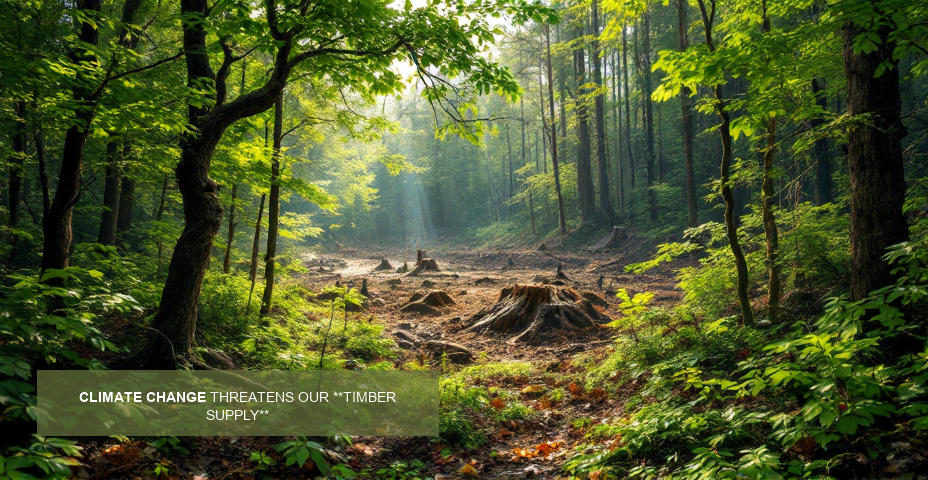A Brief Introduction to: Is climate change threatening global timber supply
Climate change continues to reshape our environment in profound ways, and the timber industry faces mounting challenges as a result. For those of us in the timber trade, understanding these shifts goes beyond environmental concern – it represents a fundamental business reality that will shape supply chains for decades to come. At Wooduchoose, we believe staying informed about these changes helps our customers make better decisions when sourcing timber products.
Rising Temperatures, Changing Forests
Global temperature increases are altering forest ecosystems at an alarming rate. Many tree species simply cannot adapt quickly enough to changing conditions. In northern regions, pine beetles and other pests now survive milder winters in greater numbers, devastating vast areas of commercial forestland. A single beetle outbreak in British Columbia damaged over 18 million hectares of forest – an area roughly the size of England and Wales combined.
These temperature shifts also affect growth patterns. While some northern regions may see increased growth rates temporarily, many commercial species face declining health and productivity as they experience heat stress and altered rainfall patterns. This translates directly to reduced timber yields in many traditional harvesting regions.
Extreme Weather Events Disrupting Supply
The increasing frequency and severity of extreme weather events pose another significant threat to timber supplies. Hurricanes, wildfires, floods, and droughts can destroy thousands of hectares of forest in a single event. The 2019-2020 Australian bushfires burned through approximately 18.6 million hectares, including significant commercial timber resources.
Beyond the immediate destruction, these events create long-term supply challenges. Salvage logging after disasters often floods markets temporarily with lower-quality timber, followed by decades of shortage as new forests slowly mature. For buyers seeking consistent quality and supply, these boom-and-bust cycles make planning increasingly difficult.
Land Use Competition Intensifies
As climate change progresses, competition for land use becomes increasingly fierce. Forests face pressure from multiple directions:
Agricultural expansion remains the leading cause of deforestation globally, as changing climate patterns force farming into new areas. Meanwhile, carbon offset projects and conservation efforts (while environmentally beneficial) can restrict timber harvesting in certain regions. Urban expansion continues to consume forestland near population centers, often affecting areas that previously supplied local timber markets.
This competition reduces the total land available for commercial forestry, potentially constraining supply even as global demand for timber products continues to rise.
Adapting to a Changing Landscape
Despite these challenges, the timber industry demonstrates remarkable resilience. Sustainable forestry practices are evolving to address climate threats through diversification of species, improved fire management, and selective breeding for climate resilience.
For timber buyers, these changes highlight the importance of diversified sourcing strategies. Relying on a single region for timber supply becomes increasingly risky as climate impacts vary geographically. Working with platforms like Wooduchoose that connect buyers with multiple suppliers across different regions provides valuable flexibility in an uncertain climate future.
What This Means for Timber Buyers
The reality of climate change requires a strategic approach to timber procurement. Forward-thinking buyers are:
- Diversifying supplier networks across multiple geographic regions
- Building longer-term supplier relationships to ensure priority access during shortages
- Considering alternative timber species that may perform similarly but face fewer supply constraints
- Exploring engineered wood products that can utilise a broader range of timber inputs
Climate change presents genuine challenges to global timber supply, but knowledge and preparation can help mitigate these risks. At Wooduchoose, we remain committed to connecting our customers with reliable timber suppliers even as market conditions evolve. By understanding these emerging challenges, we can all make more informed decisions about sourcing sustainable timber in a changing climate.
Read the full article on: Is climate change threatening global timber supply at hillv.com


